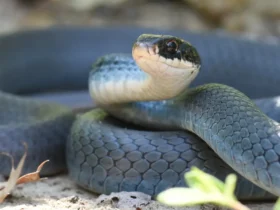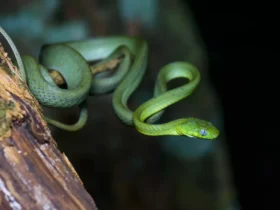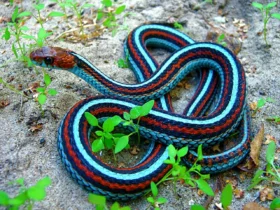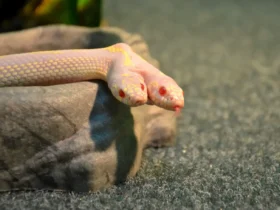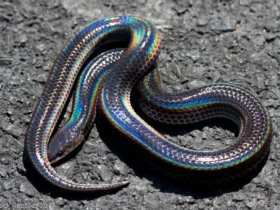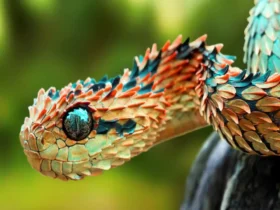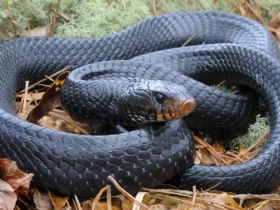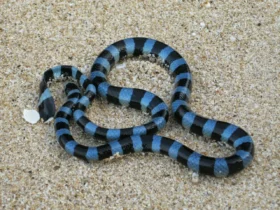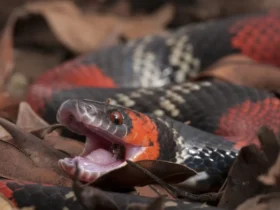The Green Tree Python (Morelia viridis) is a visually stunning reptile that inhabits the rainforests of New Guinea and surrounding islands. With its vibrant green coloration, sinuous body, and captivating eyes, this snake has captured the imagination of nature enthusiasts and herpetologists alike. In this article, we will explore the remarkable characteristics and unique adaptations of the Green Tree Python.
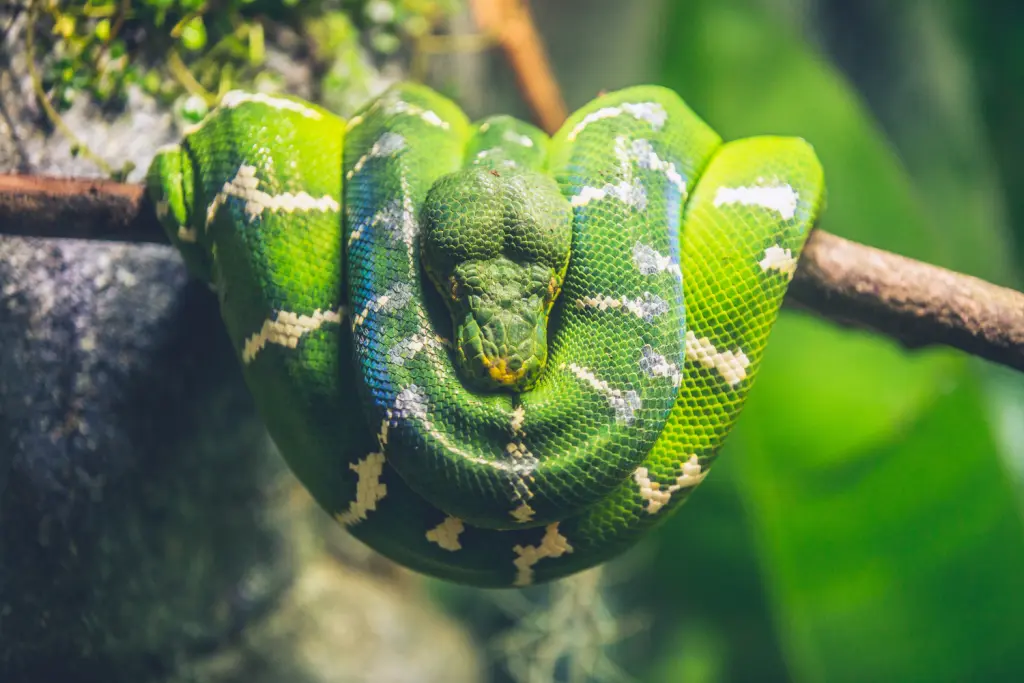
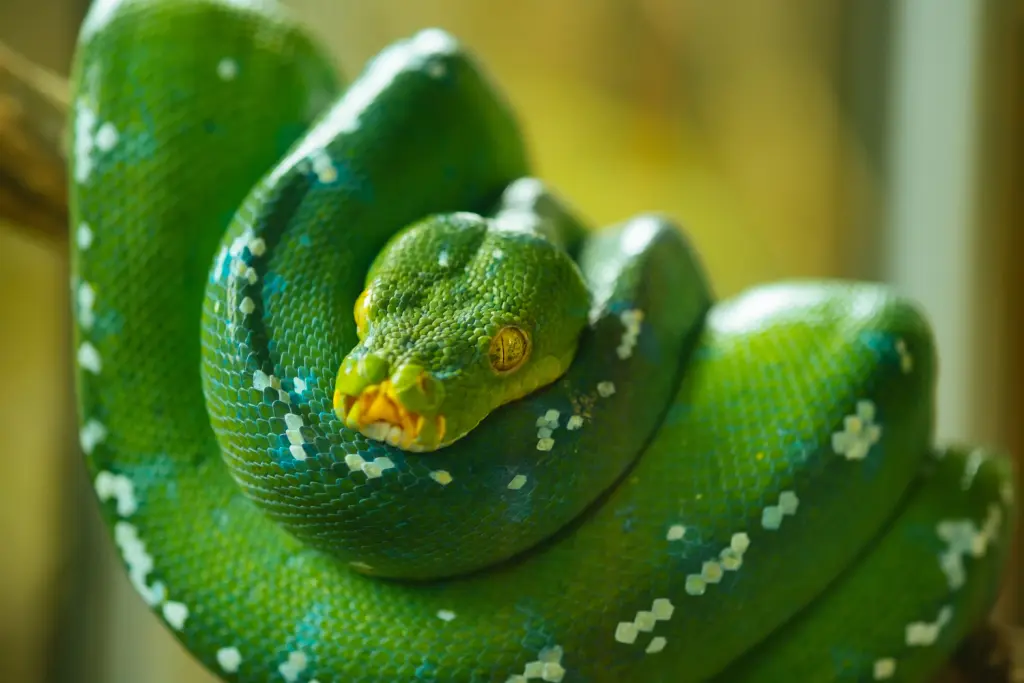
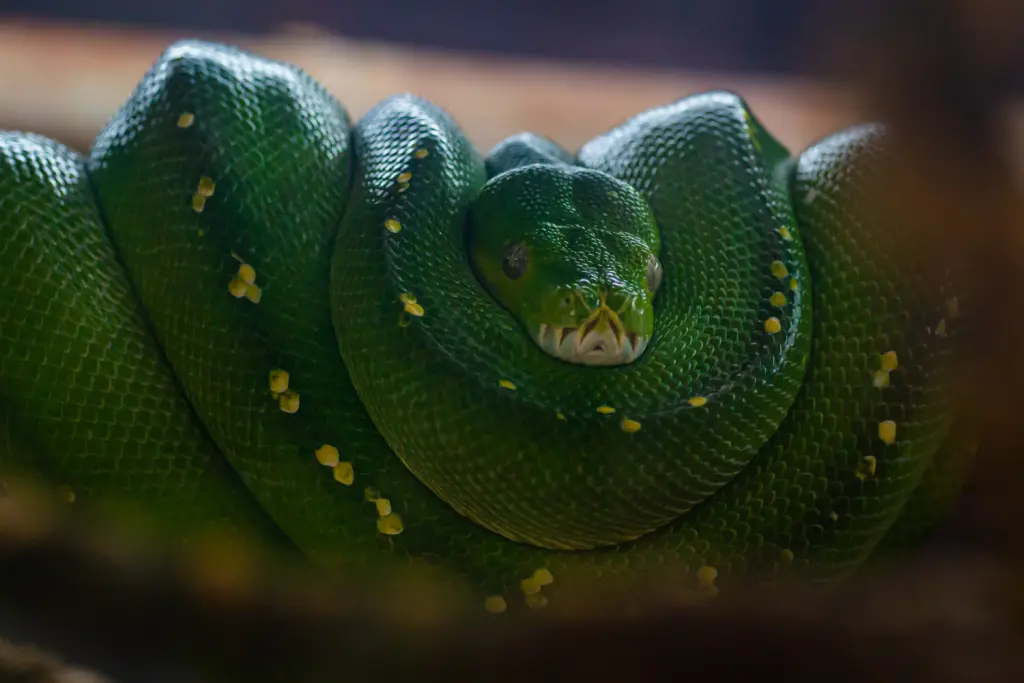
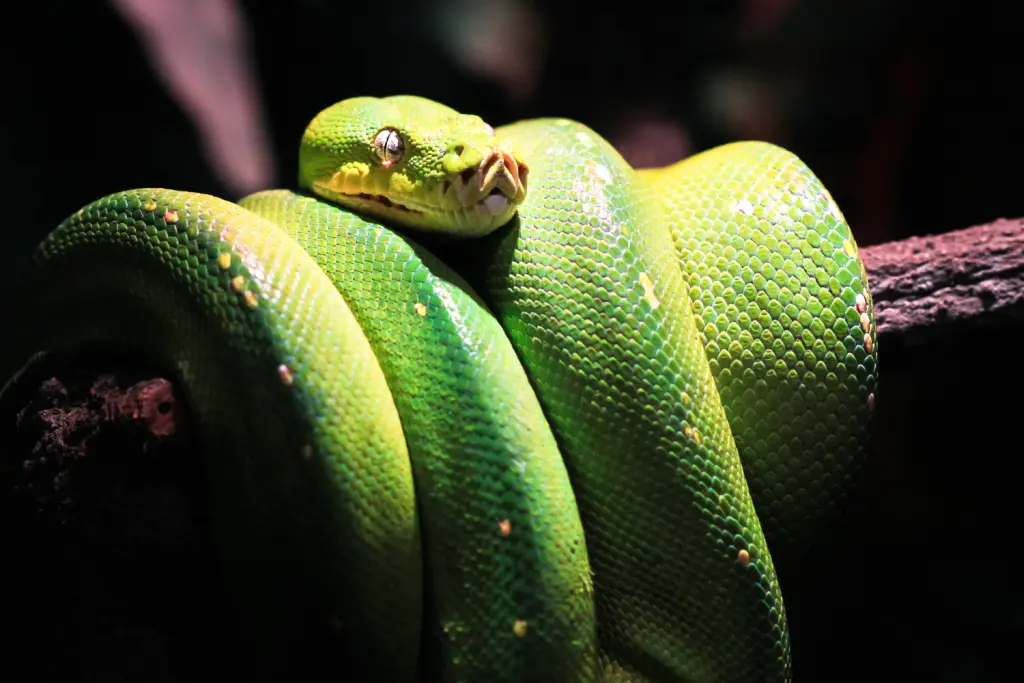
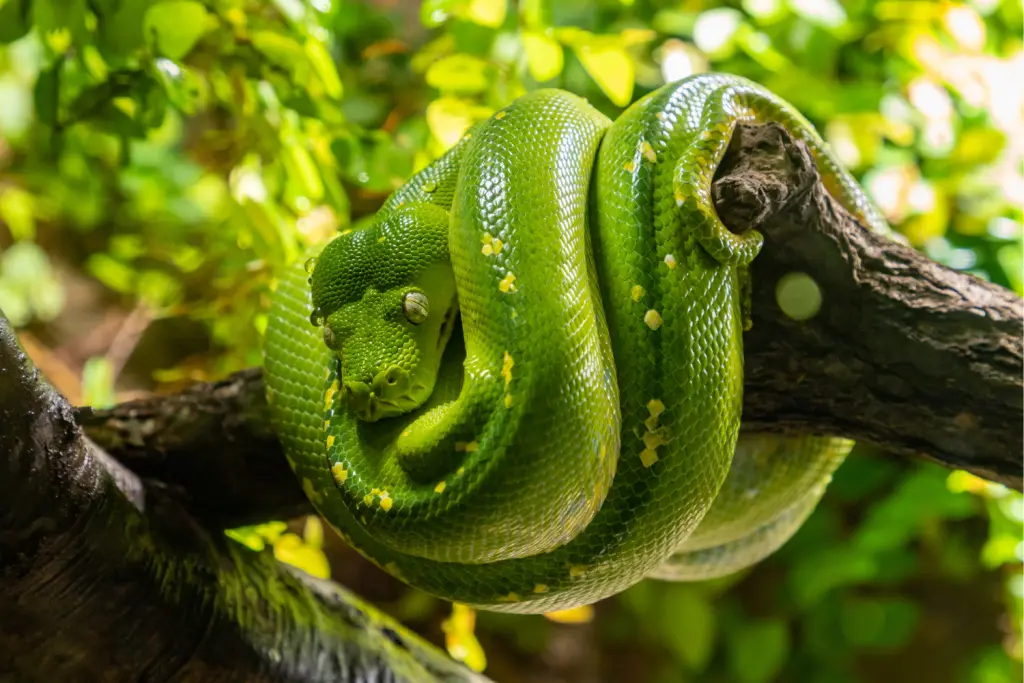
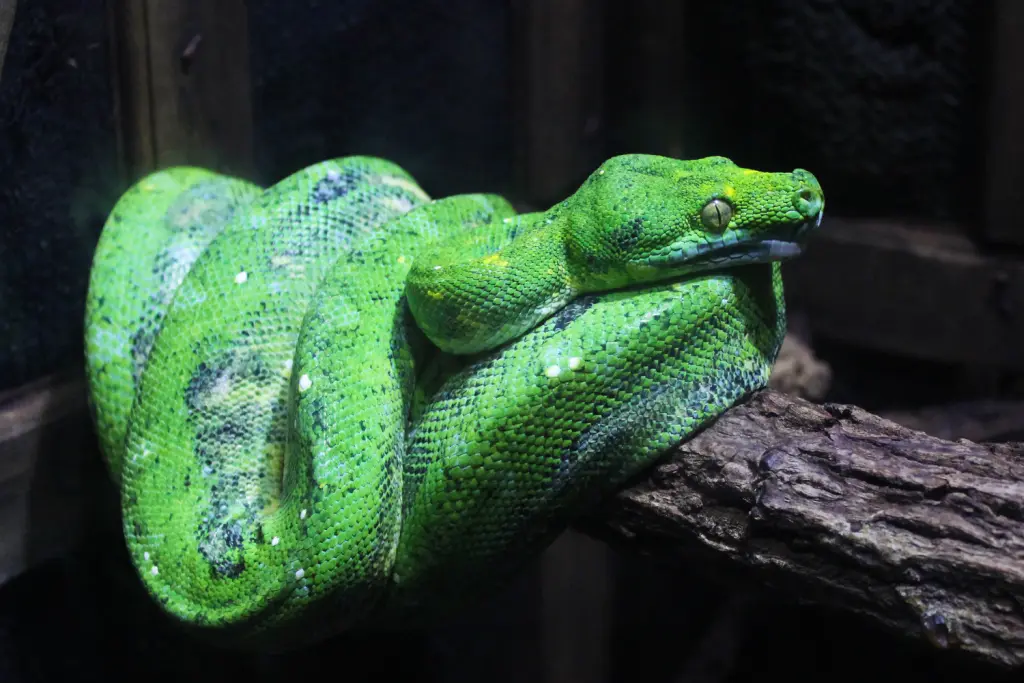
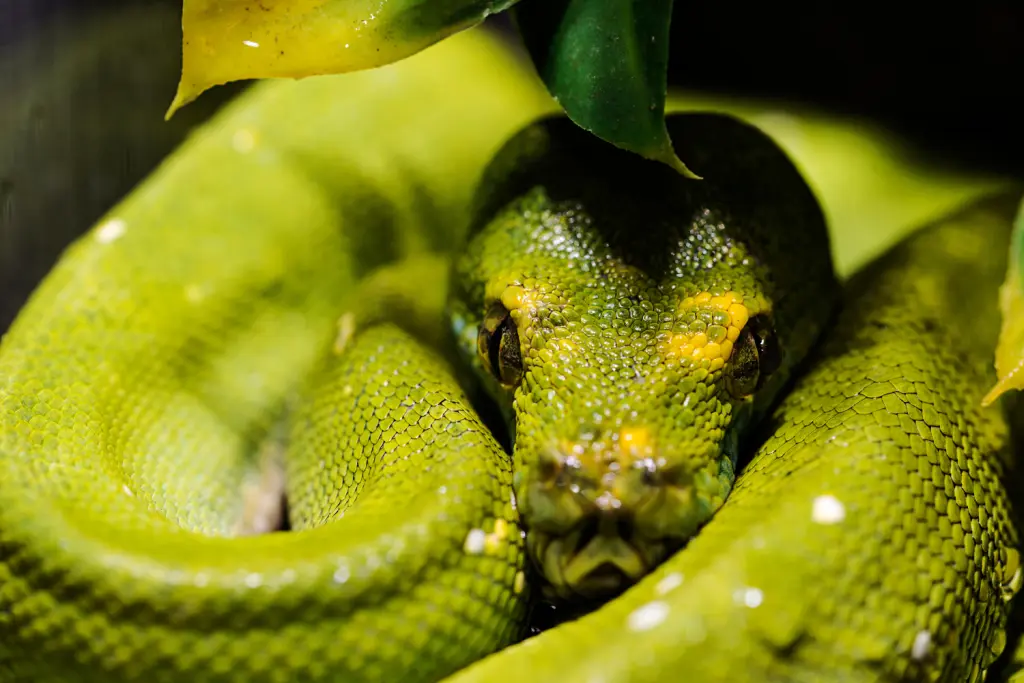
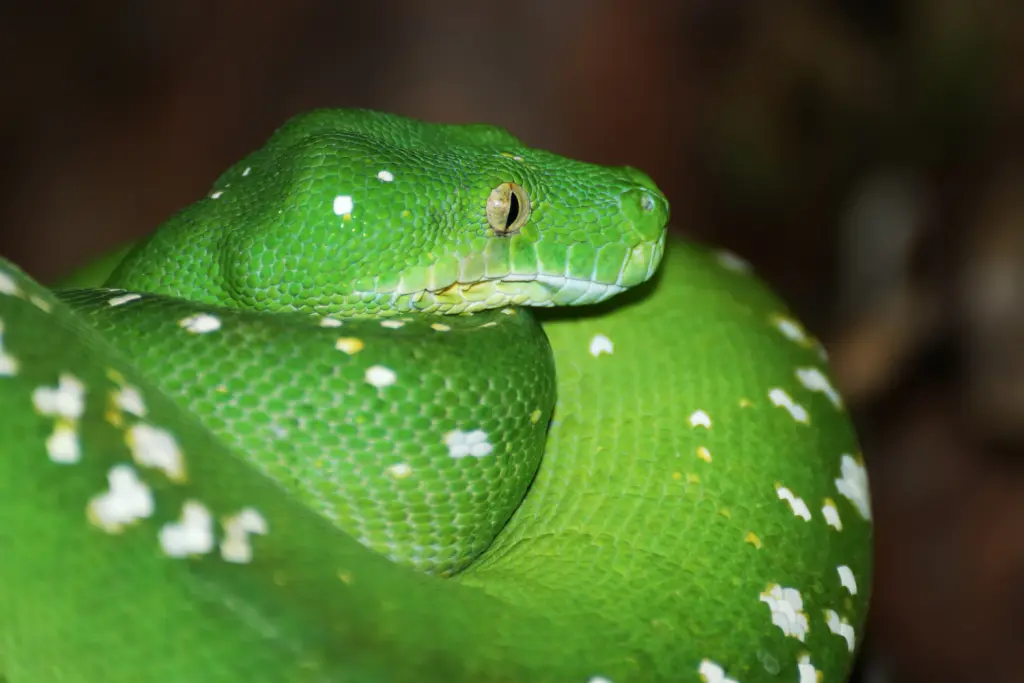
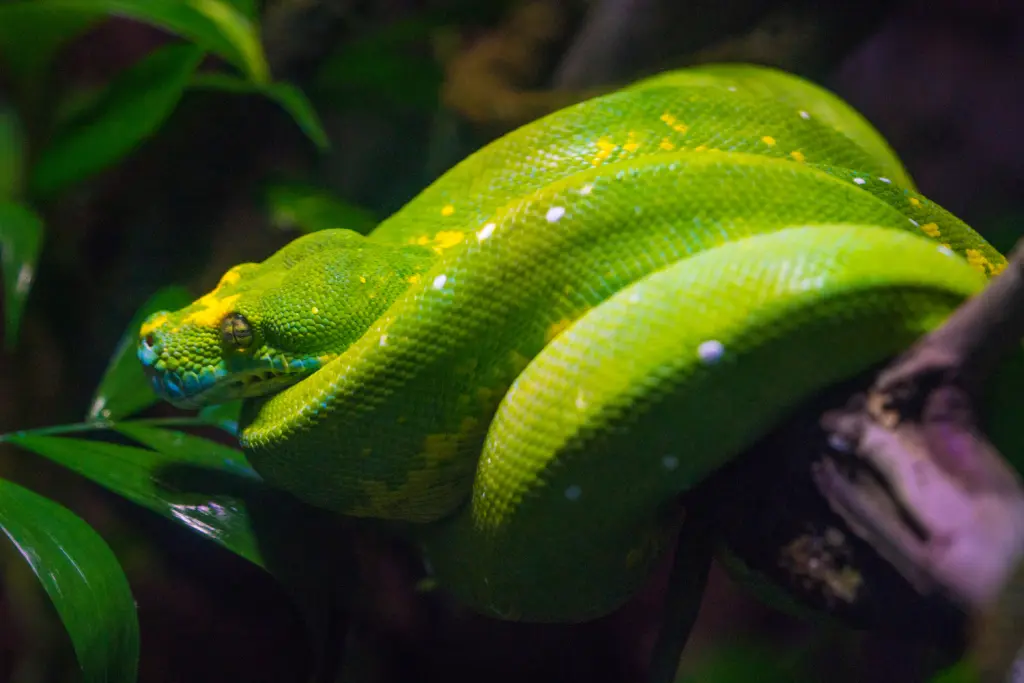
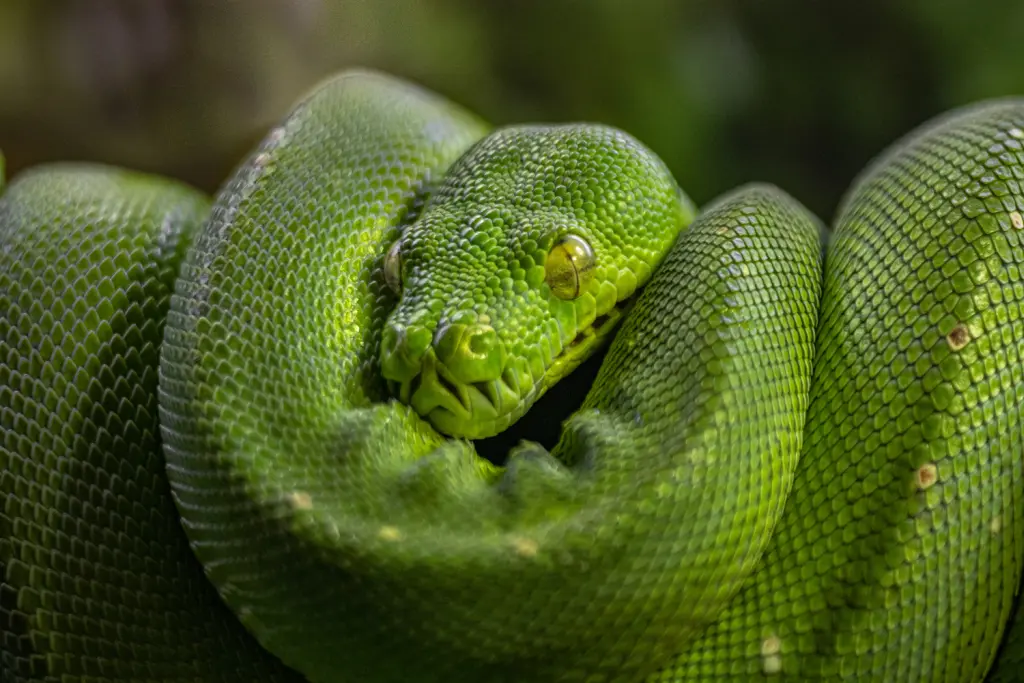
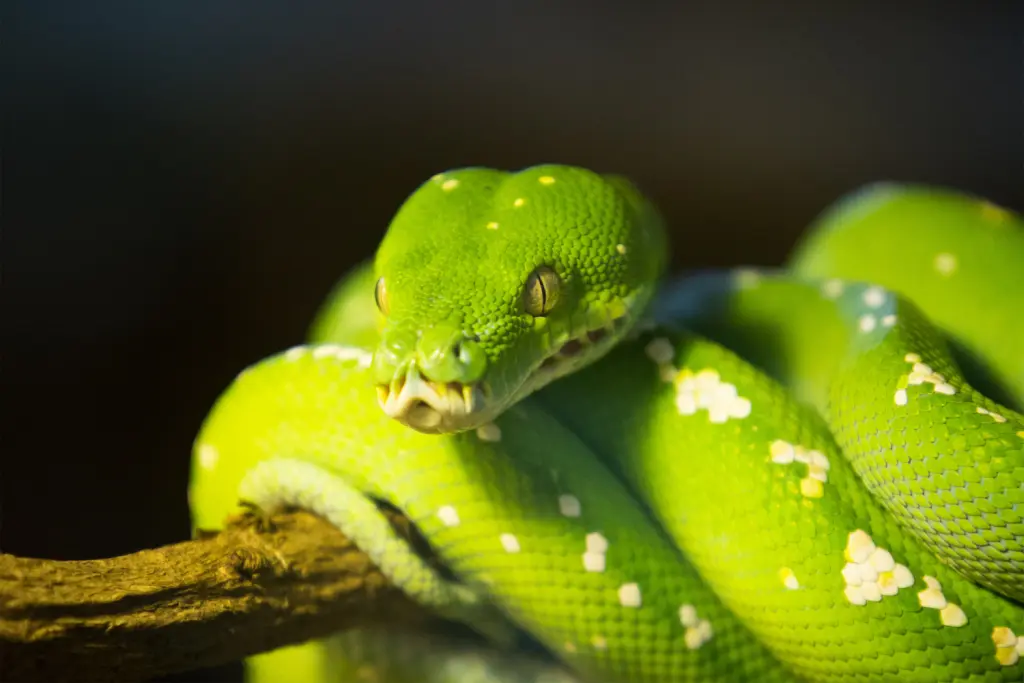
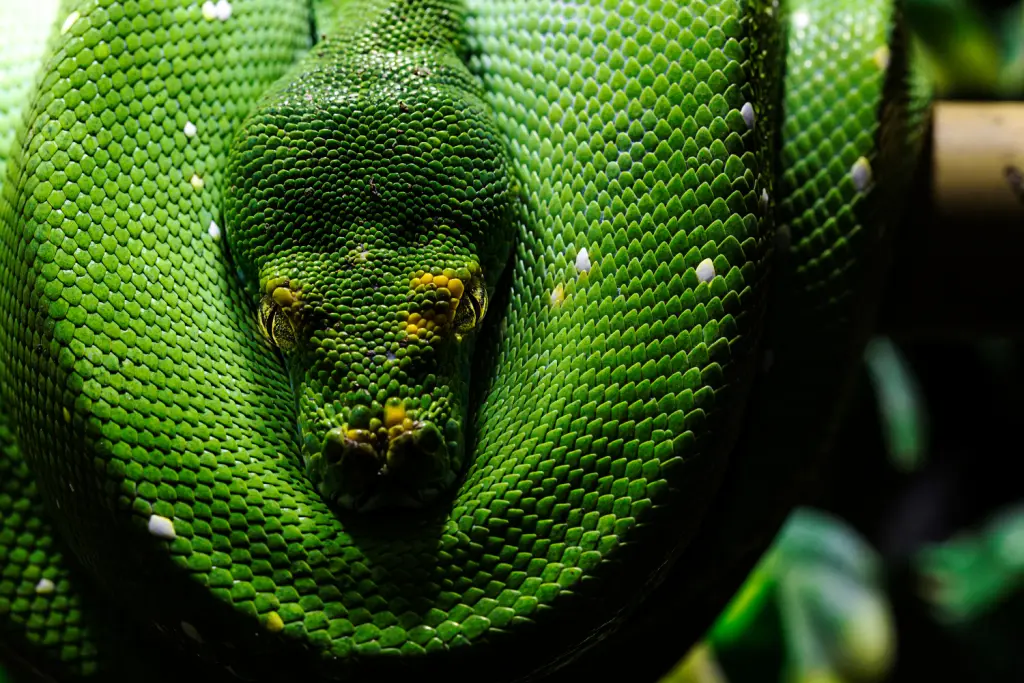
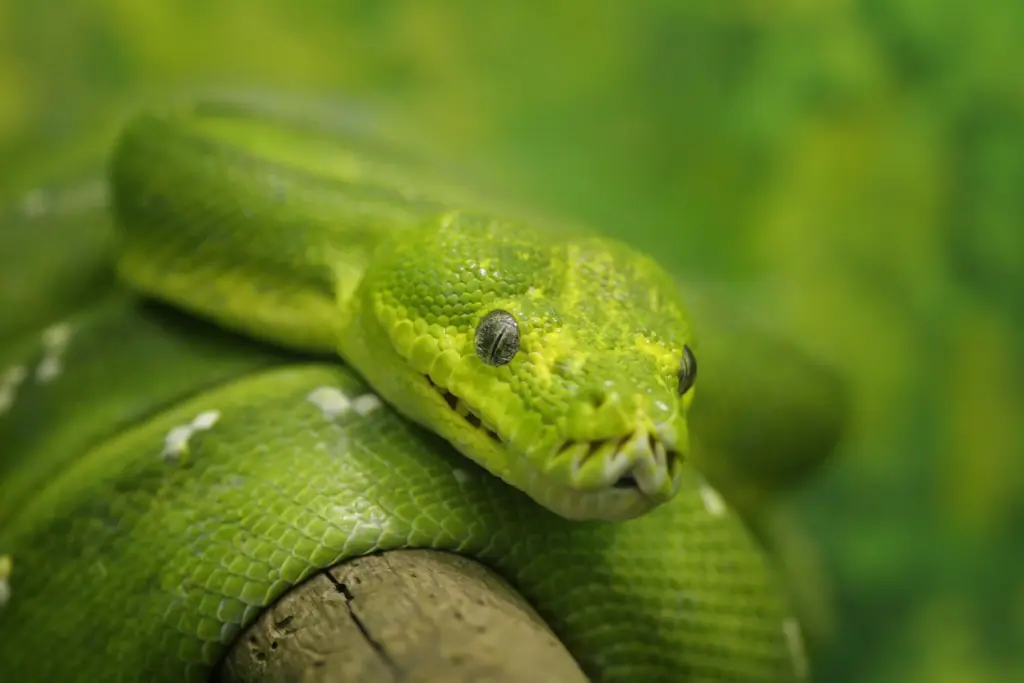
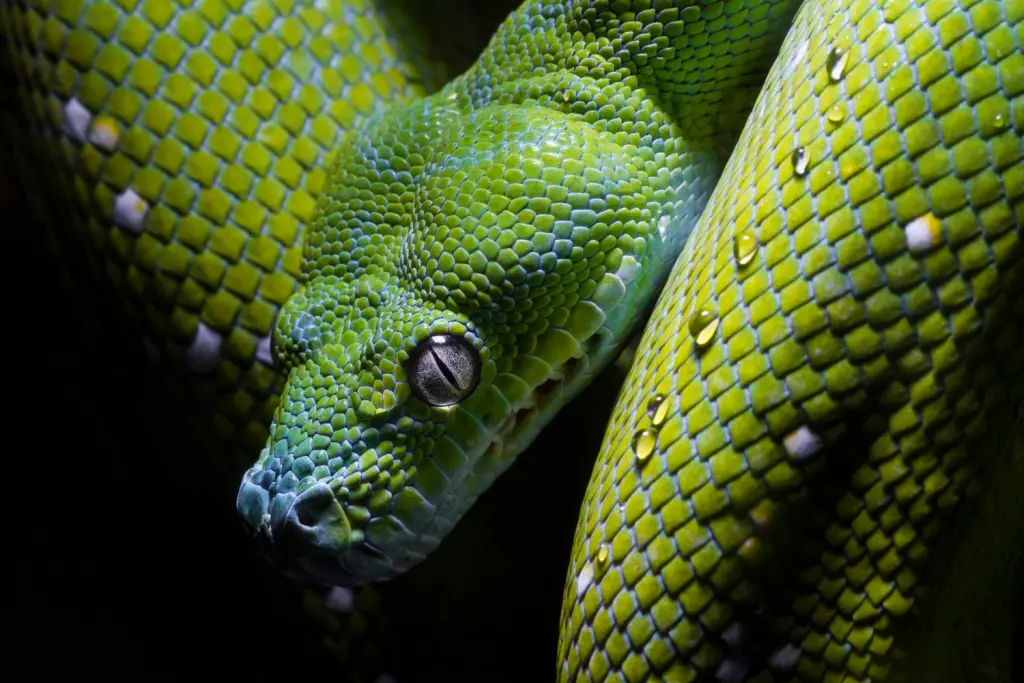
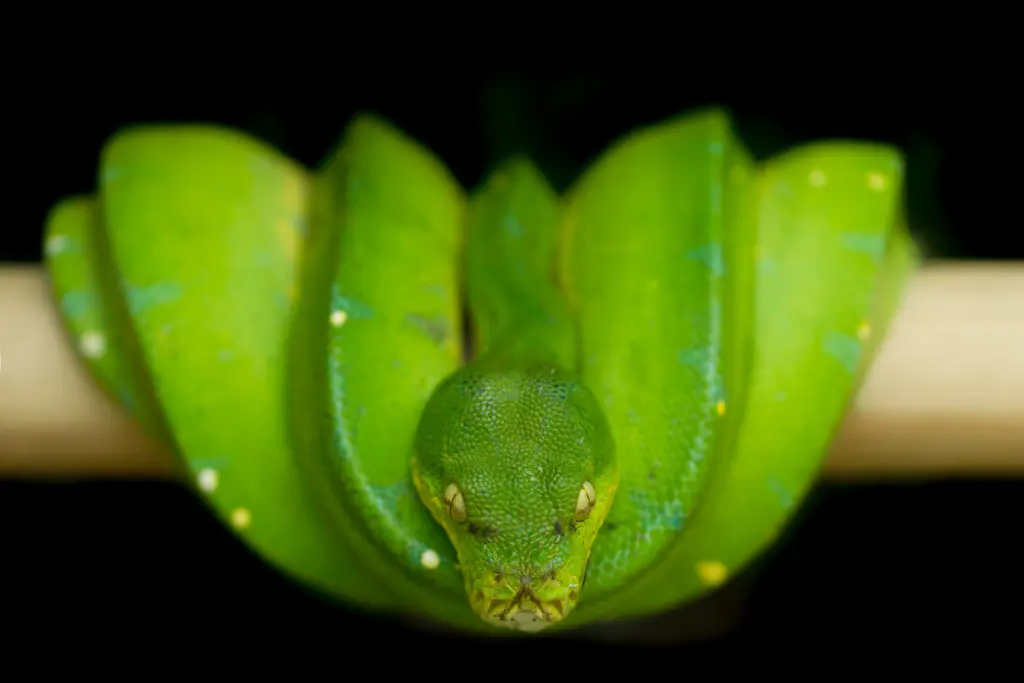
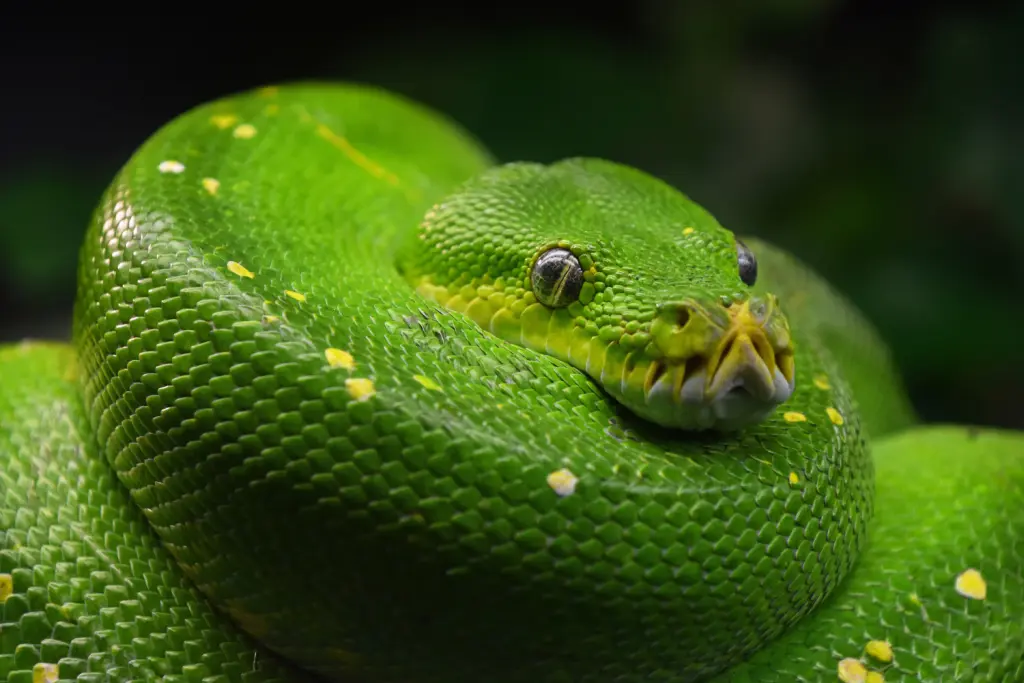
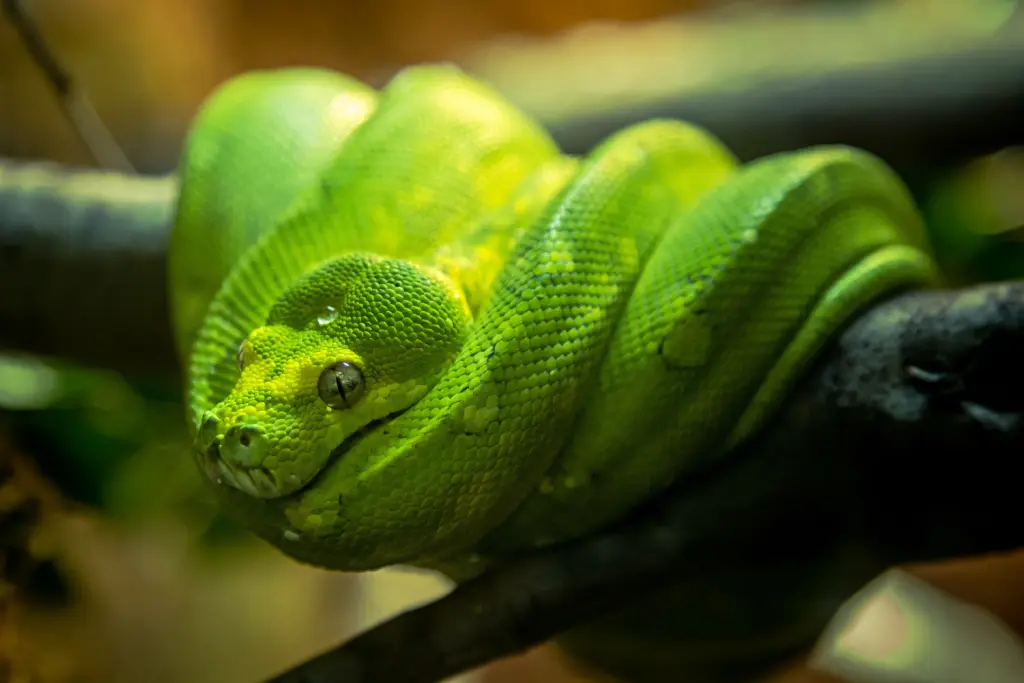
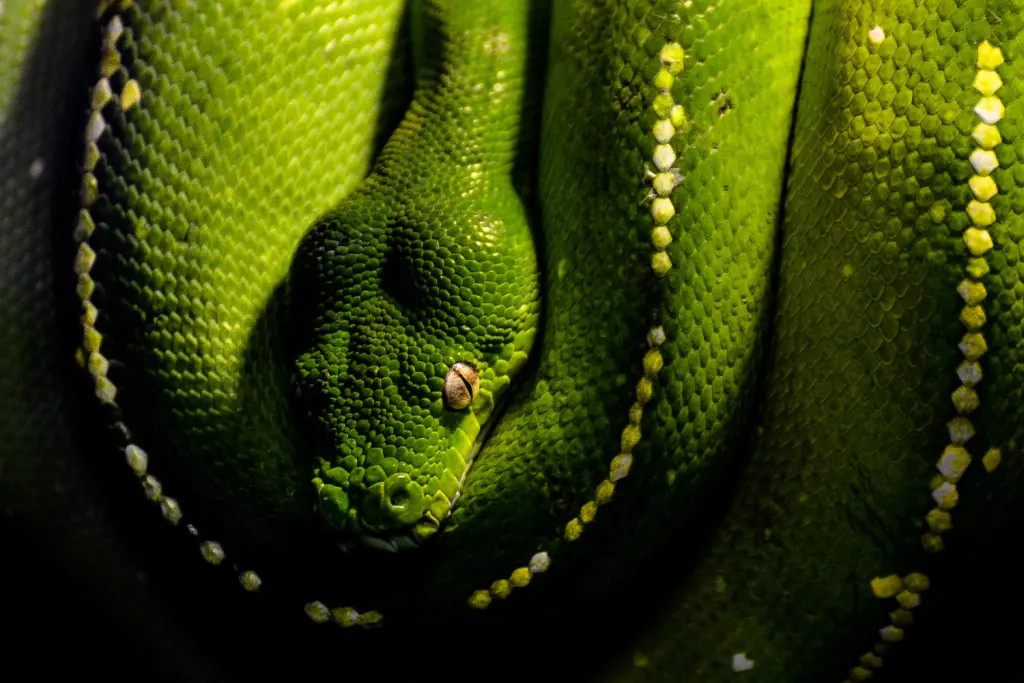
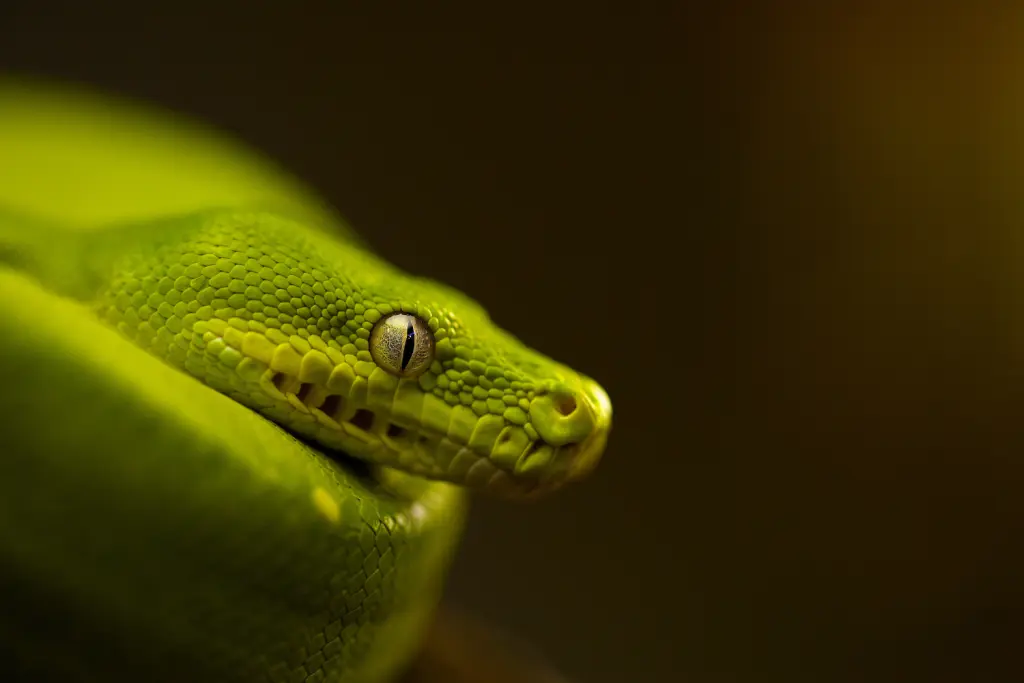
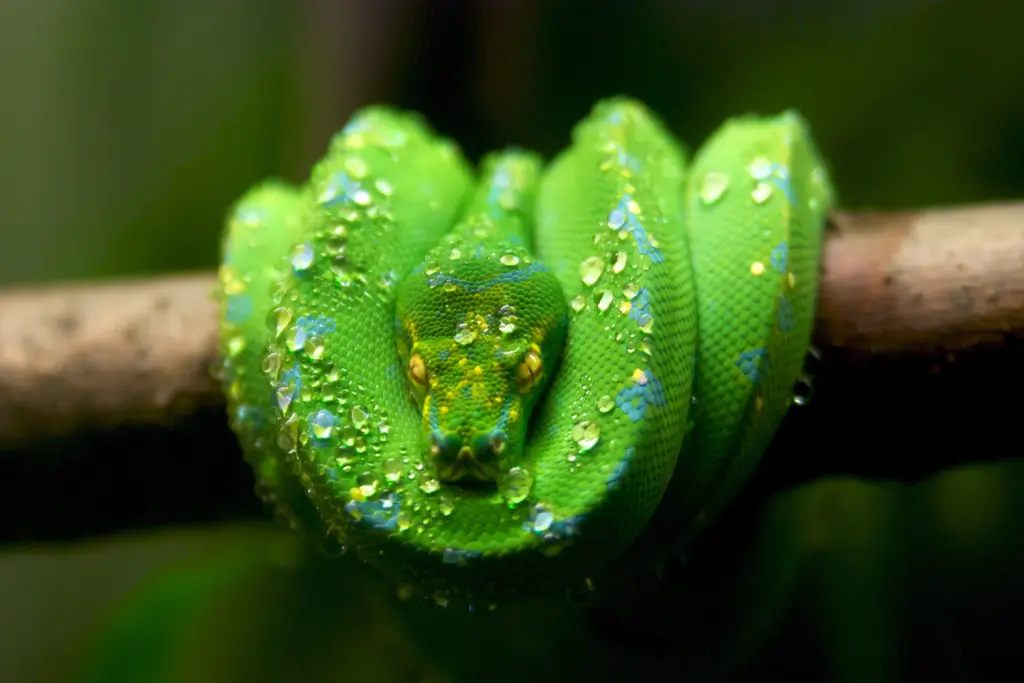
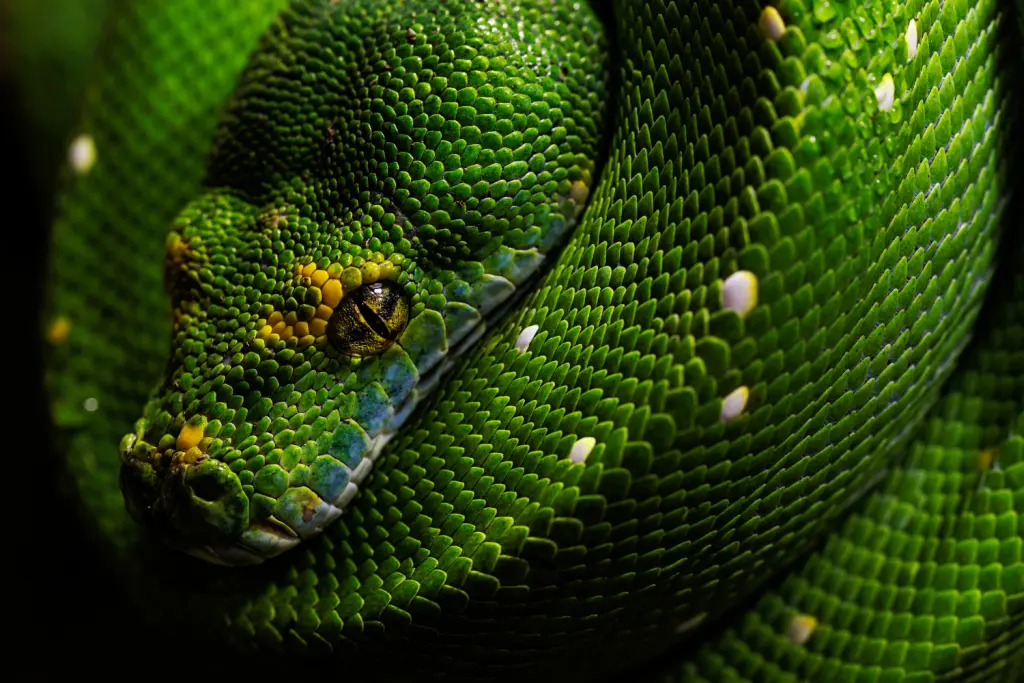
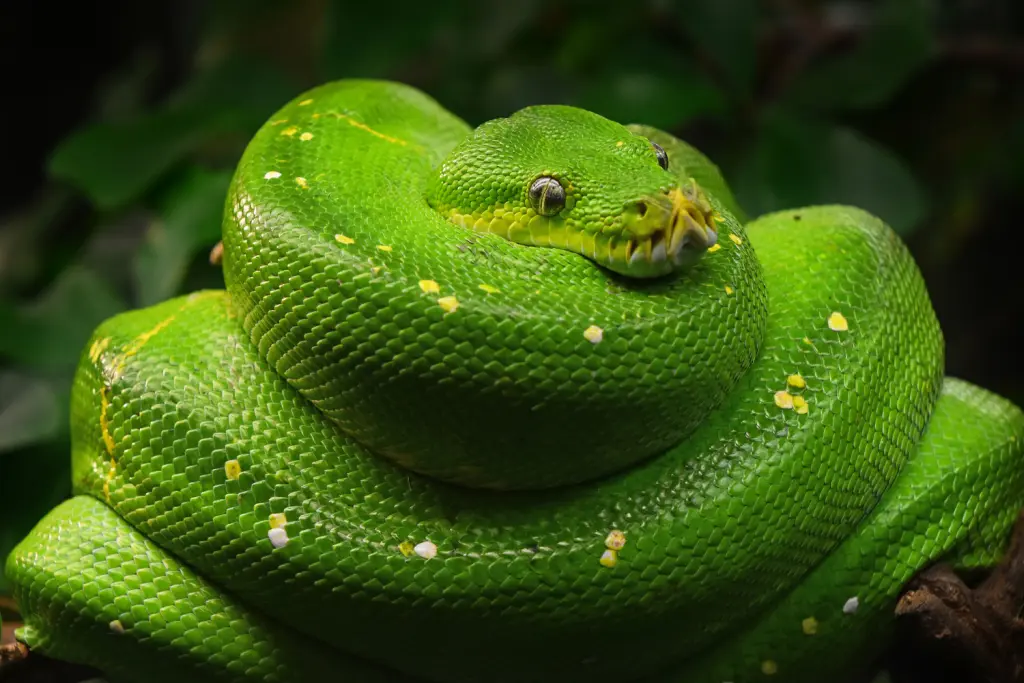
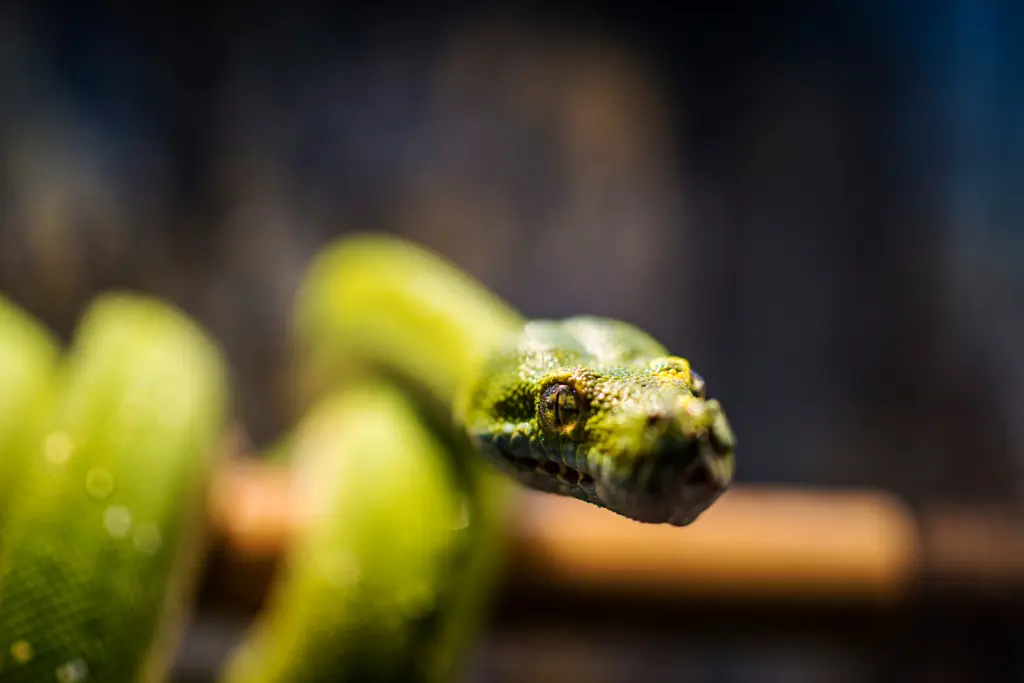
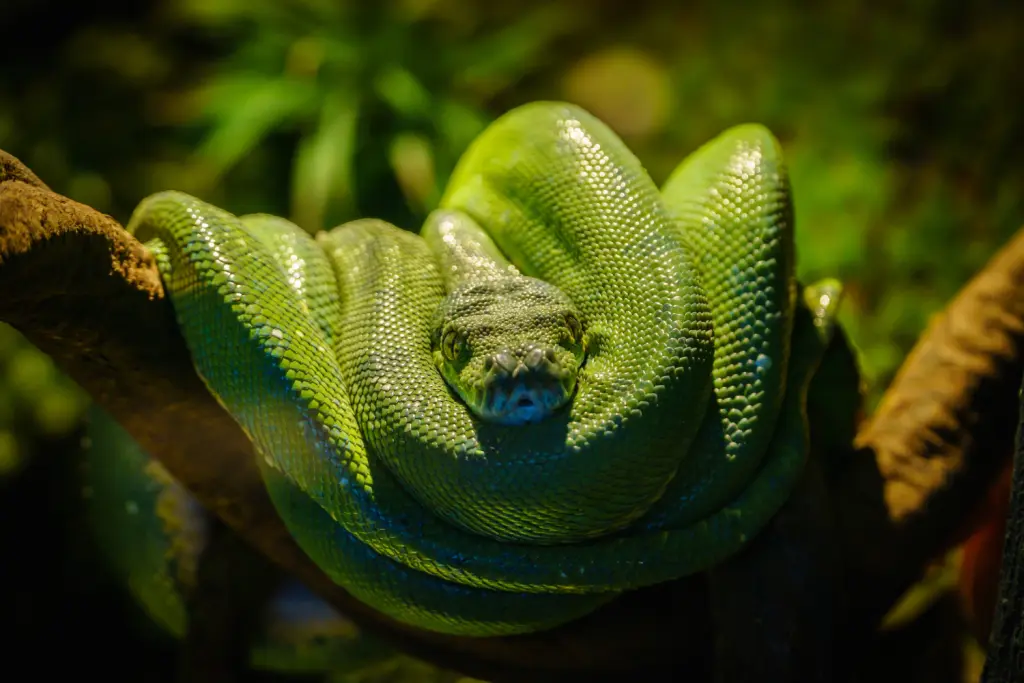
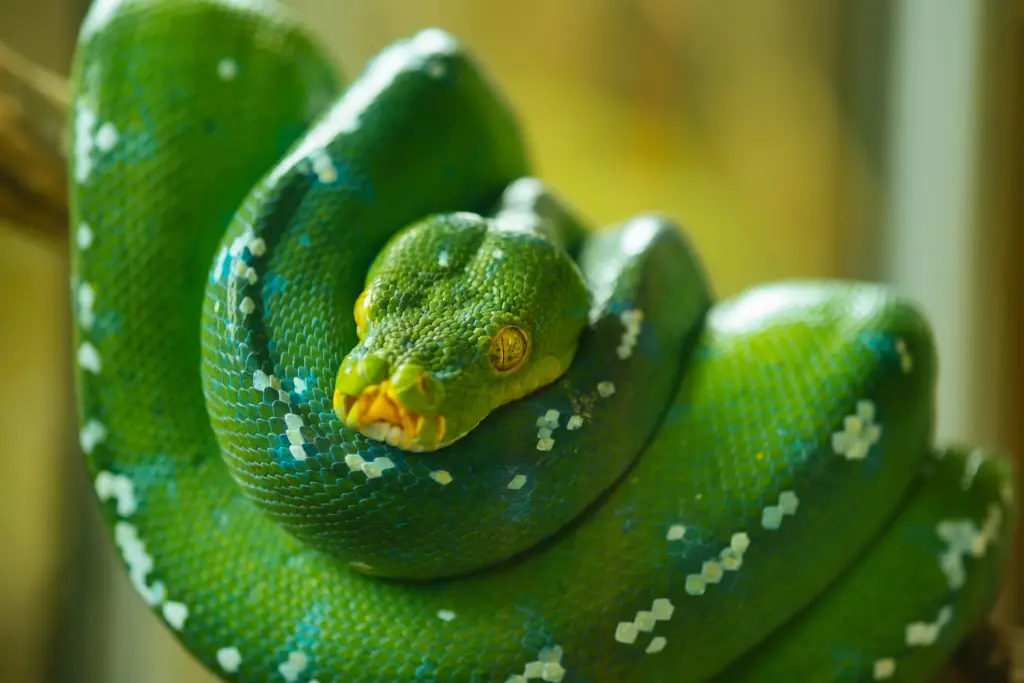
Physical Features
One of the most striking features of the Green Tree Python is its vibrant green coloration. This hue, combined with its slender body and prehensile tail, allows the snake to blend seamlessly into the dense foliage of its rainforest habitat. While green is the most common color variation, individuals may also exhibit yellow or blue hues, providing a stunning array of visual diversity. Additionally, their scales are keeled, which gives them a rough texture, further aiding in camouflage.
Habitat and Distribution
The Green Tree Python primarily inhabits the tropical rainforests of New Guinea, as well as nearby islands such as Cape York Peninsula in Australia. These snakes are arboreal creatures, meaning they spend a significant portion of their lives in trees. Their specialized adaptations, including a prehensile tail and strong muscles, allow them to navigate the forest canopy with ease. They are particularly adept at coiling around branches, relying on their gripping ability to maintain stability even in challenging positions.
Diet and Hunting
Green Tree Pythons are carnivorous reptiles, primarily feeding on small mammals, birds, and occasionally reptiles. Despite their relatively small size, they possess a formidable hunting technique. They ambush their prey from a hanging position, waiting patiently for unsuspecting animals to pass by. Once within striking range, the snake quickly strikes, constricts its victim, and delivers a venomous bite to immobilize it. Contrary to popular belief, the venom is not dangerous to humans and serves as a means to subdue their prey efficiently.
Reproduction and Life Cycle
Breeding in Green Tree Pythons typically occurs during the wet season when food availability is abundant. The female snake will lay a clutch of eggs, usually consisting of 5-25 eggs, in a protected nest site. She then diligently incubates the eggs by coiling around them to provide warmth and protection. This maternal care is quite unique among reptiles and demonstrates the investment these snakes make in ensuring the survival of their offspring. After an incubation period of about two to three months, the hatchlings emerge and are fully independent from birth.
Interaction with Humans
Green Tree Pythons are known for their docile nature and are often sought after by reptile enthusiasts. However, capturing and keeping these snakes as pets requires significant expertise and dedication. They have specific habitat requirements, including high humidity levels and appropriate temperature gradients, which can be challenging to replicate in captivity. Responsible pet ownership includes proper research, seeking advice from experts, and ensuring the well-being of both the animal and the environment.
Final Thought
The Green Tree Python is a captivating creature of the rainforest, with its stunning green coloration, arboreal lifestyle, and unique adaptations. Their ability to blend seamlessly into the canopy, coupled with their impressive hunting skills, make them a truly remarkable species. While their beauty may attract the attention of reptile enthusiasts, it is crucial to remember that these snakes should be appreciated in their natural habitat, where they play an essential role in maintaining the delicate balance of the rainforest ecosystem.
